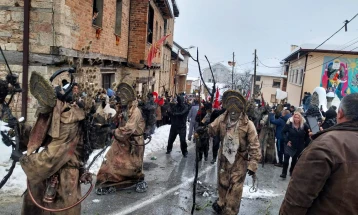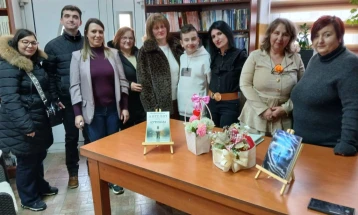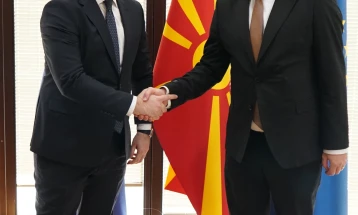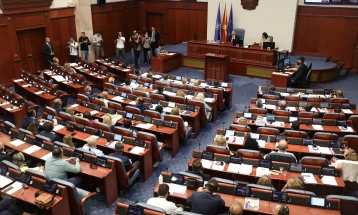Science knows exactly where an earthquake might occur but it can’t predict when, Sheshov tells MIA
- Even though it knows where earthquakes might occur ahead of time since it is constantly tracking the movement of the Earth’s crust, science has no interest in predicting earthquakes and it’s very frivolous, irresponsible and unprincipled to claim that it is possible to know when an earthquake might occur, director of the Institute of Earthquake Engineering and Engineering Seismology (IZIIS), Vlatko Sheshov, said in an interview with MIA.
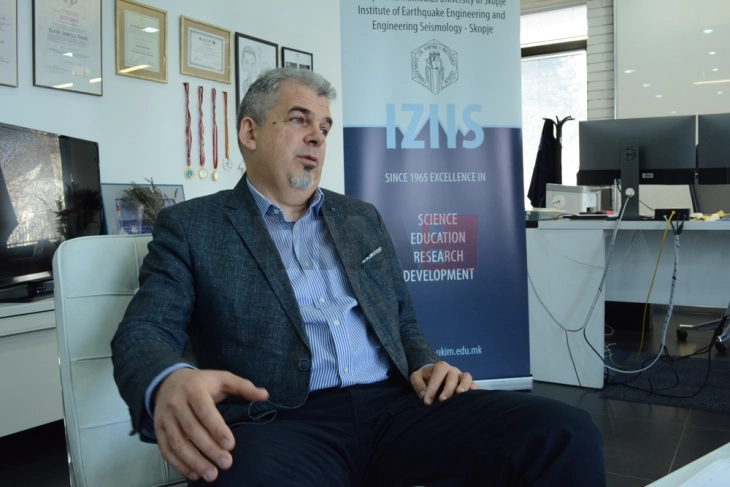
Skopje, 24 February 2023 (MIA) – Even though it knows where earthquakes might occur ahead of time since it is constantly tracking the movement of the Earth’s crust, science has no interest in predicting earthquakes and it’s very frivolous, irresponsible and unprincipled to claim that it is possible to know when an earthquake might occur, director of the Institute of Earthquake Engineering and Engineering Seismology (IZIIS), Vlatko Sheshov, said in an interview with MIA.
“If we say that it is likely for an earthquake to happen in the next 100 years, which will be stronger than, let’s say 6, that means that our data is showing that the faults are producing energy which will be released at a certain time and cause an earthquake. That is a scientifically proven fact,” Sheshov noted.
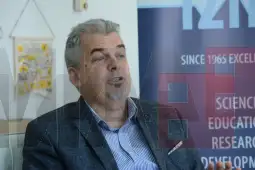
He stressed that in that sense the most important thing is to have a network of instruments that will track even the micromovements of the Earth’s crust that are not felt by humans, in order to be aware that we could expect a stronger earthquake in that area.
“We need to work on how to make sure that the technical regulation is being followed, to have modern knowledge such as seismic base isolation etc. Earthquakes will happen, and we need to prepare our buildings so that we can be safe,” added Sheshov.

In that regard, Sheshov added that in most cases the seismic regulation is respected during the construction of buildings in the country, and the control of their application carried out by IZIIS together with the responsibility that still exists among the majority of building constructors, contributes to us having safe buildings.
According to Sheshov, the fact that there was no significant damage during the series of earthquakes that happened in Skopje in 2015 is proof of the safety of the buildings, and was a real test to see what the buildings in the country are like. Sheshov added that there are no 100 percent safe buildings, and we should all be aware that there will be damage in the event of an earthquake, but what is important is that the buildings do not collapse.

Regarding the earthquake that struck Türkiye and Syria on February 6 and the large destruction and number of casualties that followed, Sheshov stressed that it is important to note that this was an extremely strong earthquake of 7.8 degrees according to the Richter scale, but also that there were probably certain inconsistencies during construction regarding the building safety standards that led to the large destruction and, according to Sheshov, additional analyses are necessary to determine this.
“I don’t have all the arguments and data. But I think that further analyses will show that there were certain systemic inconsistencies. There were reports that a large number of those buildings did not follow any specific building control. If you have no control, you also don’t have enough information to assess the buildings. Based on the photos coming from the area, I would say there are some flaws perhaps in the concept of the buildings,” said the IZIIS director, adding that analyses will be made once the situation normalizes in order to determine the main factors and reasons for the destruction.

Sheshov stressed that according to the current findings, there is no connection between the earthquake in Türkiye and Syria and the series of earthquakes that occured in the Balkan region in the past two weeks, like in Romania and Albania, because the Anatolian faults has no direct correlation with the central Balkans.
“First of all, there is a great distance between the two regions, and secondly, that fault is located between certain plates that do not affect us much. However, whether these earthquakes are connected, I believe that there is no direct connection, there may be a connection, but we don’t have findings that show that currently,” added Sheshov.

Ahead of the 60th anniversary of the catastrophic earthquake in Skopje in 1963, Sheshov said that IZIIS intends to mark the anniversary with a series of activities, which began with a workshop dedicated to seismic base isolation, organized in cooperation with the Japan Society of Seismic Isolation (JSSI) and with the support of the Japanese Embassy.
“More than 50 participants attended the workshop, the Japanese Ambassador attended the opening and we witnessed a real exchange of experiences, not only about what seismic isolation means, but also how to really implement all of that. This method of protecting buildings is probably the highest and most successful method. The Institute has accumulated knowledge through research, tests, analyses, however, we have to be honest, the implementation of seismic isolation goes hand in hand with the technological development of the country. Apart from research, we also need application, technical regulation, an industry which would support all of this, and of course, maintenance,” said Sheshov.

The IZIIS director reminded that one of the most significant buildings not only in Skopje, but also in the world, built according to the method of seismic isolation, is the Skopje primary school “Pestaloci”.
“It’s good that we have a representative in the catalog of seismically isolated buildings in the world, but the technology sector and the industry need to be involved a bit more and there needs to be interest among the construction companies as well,” added Sheshov.
In the coming months until July, Sheshov said that IZIIS will carry out a large number of activities aimed at raising public awareness, holding lectures, training and courses on what earthquakes mean, how to act during an earthquake, how to protect the homes and what to do after an earthquake. Additionally, the Institute will perform a rapid screening of several buildings to assess their seismic reliability and will organize open days during which the citizens will get a chance to visit the Institute’s laboratories.

“IZIIS owes the City of Skopje, because the Institute was established after the Skopje earthquake and we really feel a special responsibility towards the city and towards that earthquake. Therefore, we also took the observation of the 60th anniversary quite seriously and specific activities have already started. We also have a slogan, and an appropriate logo – ‘IZIIS for Skopje’, how IZIIS can repay the City of Skopje,” said Sheshov.
Sashko Panajotov
Translated by Angel Dimoski
Photo & Video: Aslan Vishko


